Pleasant Grove Church Notable Facts
Location: Lewinsville Road between Spring Hill Road and Route 7-Leesburg Pike
- Established in 1893, Pleasant Grove Church was built by some descendant’s of freed slaves, freeborn Blacks and Native Americans. It is one of the few remaining historic structures remaining in McLean. It stands as a beautiful example of 19th century vernacular architecture.
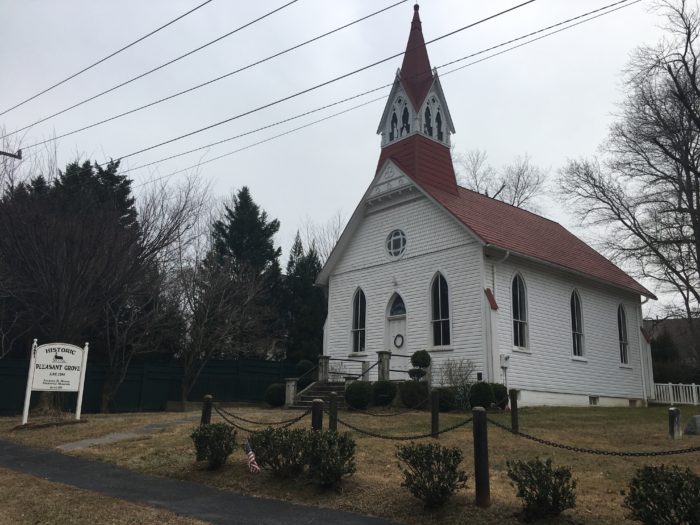

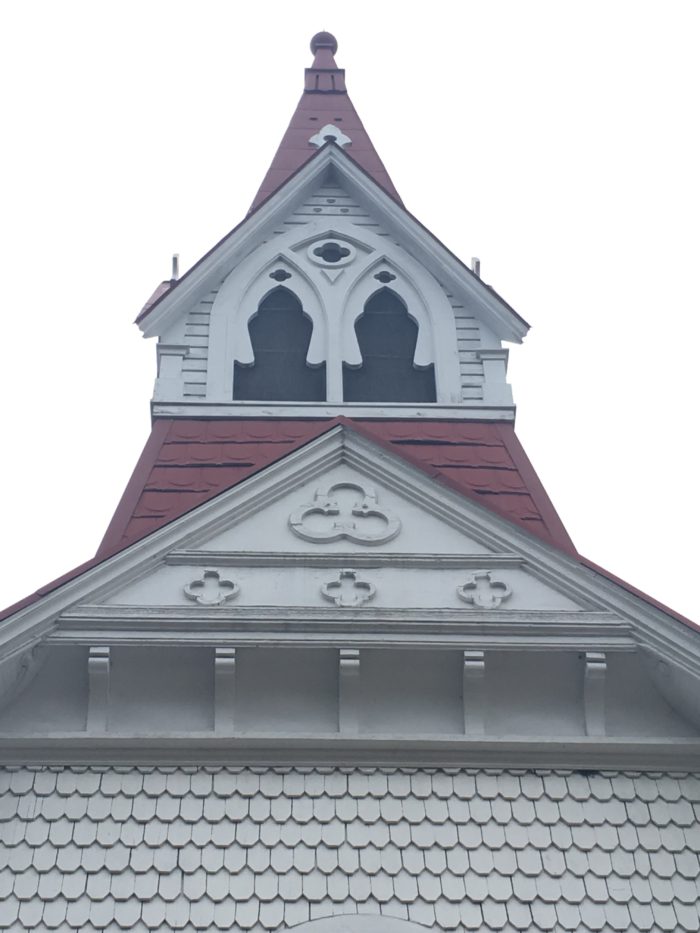
- One of the church’s founders was William Sanford Sharper, a Black local farmer and shoemaker. He was also the church’s first pastor. A museum in the church contains many original items from Sharper’s home including tools, furniture, a butter churner, phonograph, water pitcher, washbowl and a chamber pot.
- Other Sharper family members were also integral to Pleasant Valley’s beginnings. In 1882, Samuel Sharper led congregants in raising funds to buy land and build the church. (Samuel’s grandfather was a slave who bought his own freedom and his grandmother had been freeborn.) Samuel grew up in Loudon County, VA but lived in along Bellview Road area during the Reconstruction era on his grandfather’s 34 acre homestead.
- Working beside other church congregants, Lewis Henry Sharper was a master craftsman who did much of the original carpentry on the building.
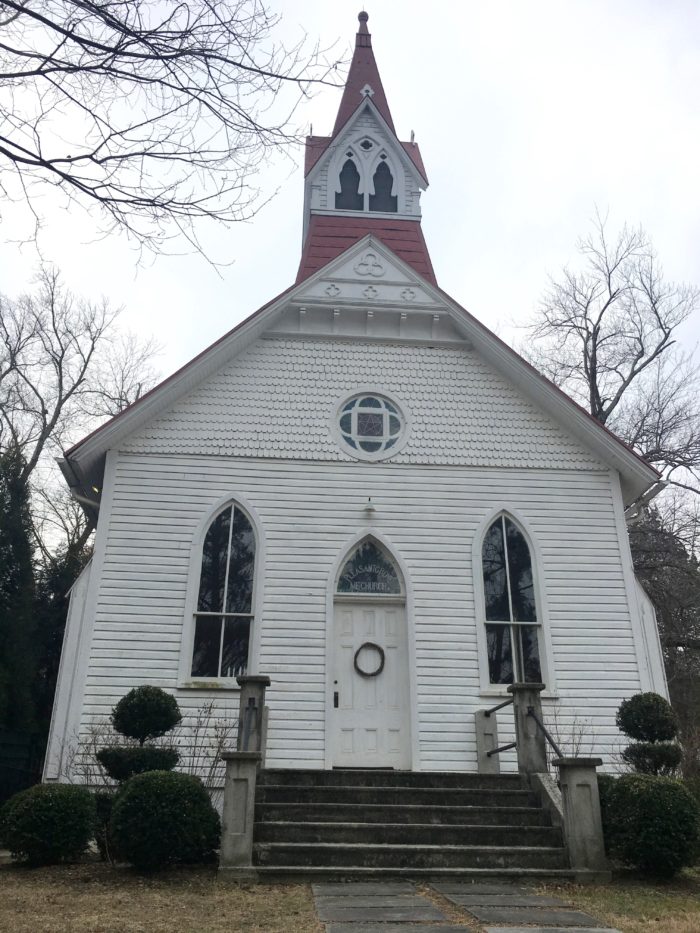

- In 1897, Samuel Sharper died and congregants began the cemetery located next to the church. All of the founding church members and their families are buried in this cemetery.


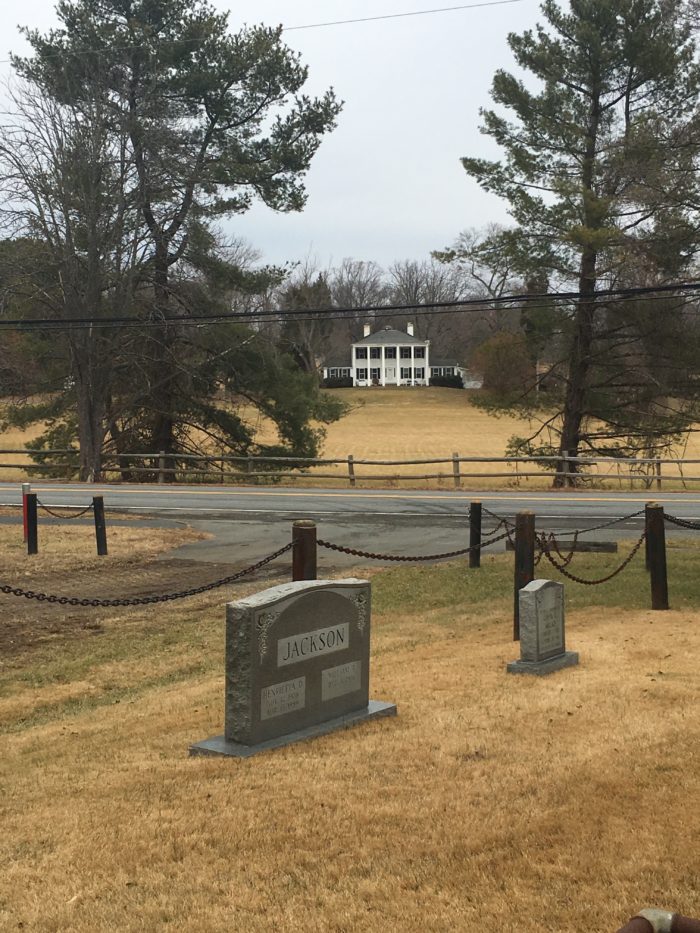
- It was a vibrant church until the early 1960’s. However, the rising cost of living in the area diminished the remaining Black population and the congregation built a new church in the Dunn Loring area.
- In 1980, a local antiques dealer bought the building, stripping it of all the original stained glass windows and nearly all of its pews. Soon after, Chris Smith bought the church for $12,500 – saving it from the grips of a demolition crew.
- In 1982, longtime McLean residents Joan and Garry Jewett (and owners of Jewett farm located across the street from the church) joined up with Smith to preserve the church and it’s unique history. They established a nonprofit organization called “The Friends of Pleasant Grove Church” to pay for renovations and a permanent easement on the land.
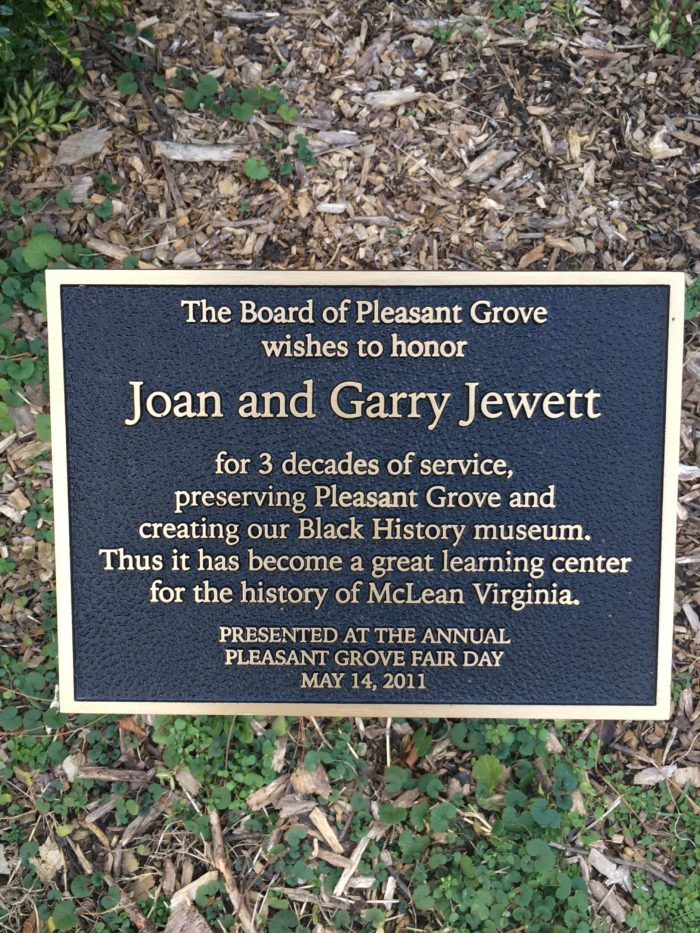
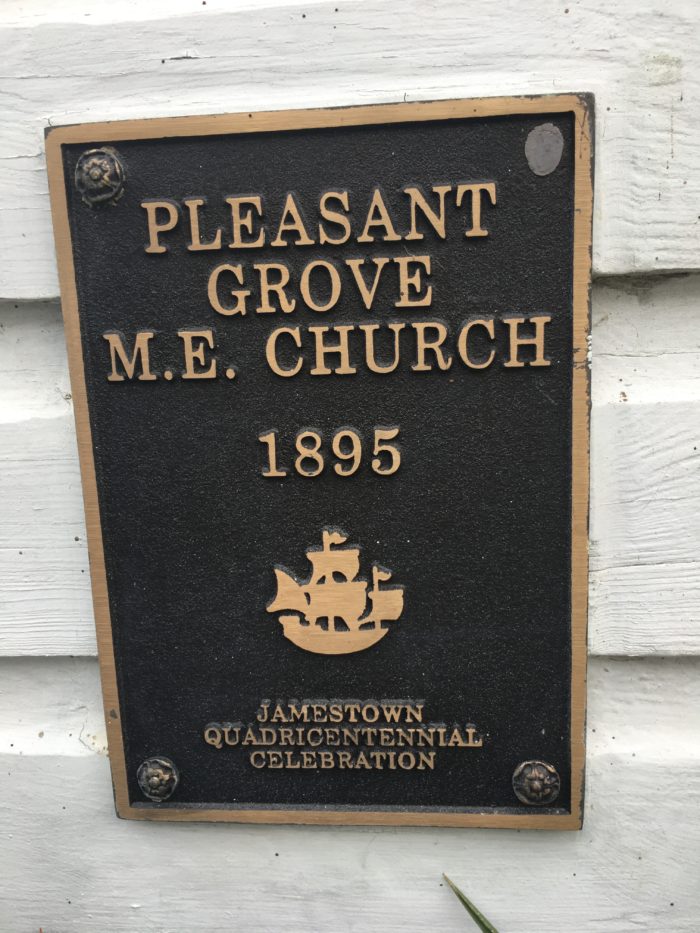
- In 1992, the church’s steeple was destroyed by lightening and then replaced. The charred remains of the original steeple are on display in the church’s museum.
Sources:
- Historic Pleasant Grove Church Pamphlet, The Friends of Pleasant Grove
- Mike DiCicco, “Church Preserves Oasis of History,” McLean Connection, May 14-20, 2008.
- Carole L. Herrick, A Chronological History of McLean, Virginia (Capitol Advantage Publishing, 2002), 21, 35.
- Andrew M.D. Wolf, Black Settlement in Fairfax County, Virginia During Reconstruction, Dec. 1977, Fairfax County Public Library Ref. Vir. 975.29W.